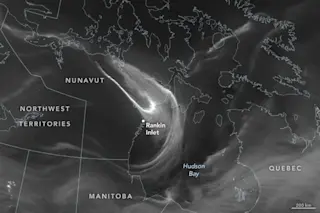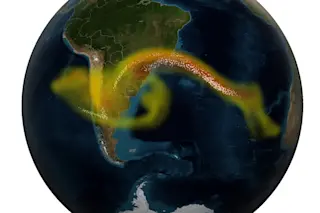On Nov. 29, a wind from the Sun slammed into the protective magnetic bubble that surrounds the Earth at a speed of about 430 miles per second.
As you might expect, the bubble (scientists call it the "magnetosphere") got all roiled up. And that sparked what NASA describes as a vibrant display of the aurora borealis, commonly known as the northern lights.
As the auora swirled above Hudson Bay and other parts of Canada, the Suomi NPP satellite was there to capture the action — as seen in the image above, acquired at about 2:30 a.m. local time.
It all got started with a hole in the Sun — a coronal hole, to be more precise.
These dark, relatively cool, and less dense regions of the Sun's upper atmosphere feature an open magnetic field structure. This allows protons and electrons that make up the solar wind to stream out more ...














